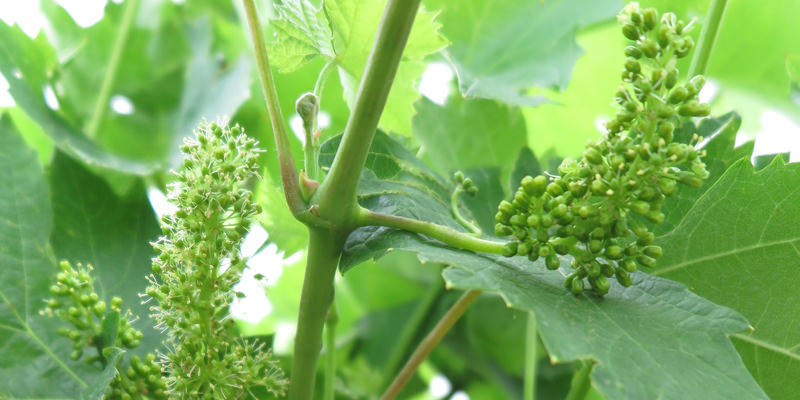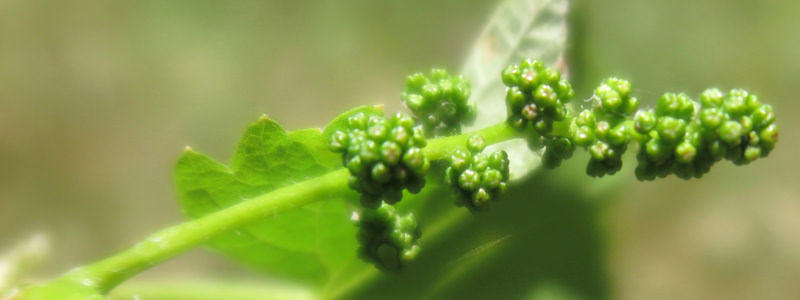Now that vineyards across the Northern Hemisphere have transformed from scraggly fields to wild cascades of green, it seems like sweet grapes should be poking out at any minute, right?
Not quite.
First, grapevines enter the flowering phase, a nerve-wracking period for grape growers and winemakers alike, since the tiniest disruptions to barely-there flowers can mean a sad vintage. Even before summer heat waves, pesky bugs, or early rains start wreaking havoc on a vineyard, flowering literally puts grapes on the bunches, determining just how many sweet berries have a chance to survive the season and end up in a bottle near you.
Unlike Washington D.C.’s famed cherry blossoms, or the apple and pear blooms that cover swaths of the Pacific Northwest each spring, grapevines do a more subtle dance to pollinate their tiny flowers.
After spring’s initial bud break, vines go on a rapid vegetative growth spree – often growing up to an inch per day – and their leafy tendrils expand wildly. About a month after this leafy invasion(and two to three months after initial bud break) the flowering frenzy begins underneath the vine’s massive leaves.
Hidden beneath the vine’s leafy canopy flowering begins with the development of tiny green spheres known as a “calyptras.” Called caps for short, these miniature green balls encircle the delicate, pollen-carrying parts of the flower. At this point, the vines look like they’re covered with grape bunches that have been hit by a shrink ray, but these mini-bunches simply serve as a convenient protective package for future grapes.
When the vine is ready, the caps bursts open with a pop to reveal the bare basics of a flower: a pistil and several pollen-carrying stamen. There’s no fluffy, colorful flower petals here – just off-white strings smaller than your pinky nail.
Over a few weeks, pollen from the stamen is gently transferred to the pistil, and little by little each flower is pollinated. Slowly, the petals from the cap fall to the ground along with bits of pollen.
Once pollinated, each flower gives way to a tiny, hard green berry the size of a small pea. Each green pea eventually ripens into the grapes we know and love, but a multitude of weather factors can disrupt this fragile process and taint an entire year’s work.
As I write this, ominous clouds are rolling across Northern California, carrying enough rain and wind to completely disrupt the flowering process. Because grape blossoms aren’t protected by flower petals once open, strong winds (like those that often accompany early summer thunderstorms) can shake the pollen from vines, preventing some flowers from pollinating. Strong rains, hail, and frost present similar risks to disrupting this delicate pollination process. Unlike other phases of the grape cycle, where winemakers may be able to give themselves options in the event of inclement weather, flowering only happens once and at the complete discretion of the vine. Poor weather and incomplete pollination leads to shatter, or bunches that are only develop to be half or 2/3 full.
Fewer grapes, or poorly developed berries (known in the biz as poor fruit set) means fewer chances at making a great wine, and no chance of a bumper crop. So while you’ll never see a perfect, fragrant, colorful bloom in a vineyard, if you do see something that resembles a flower, definitely don’t pick it. Just wait, and then drink it.


